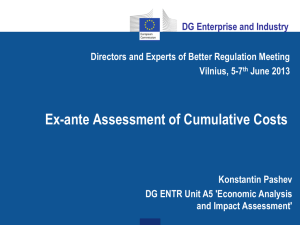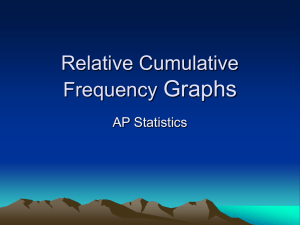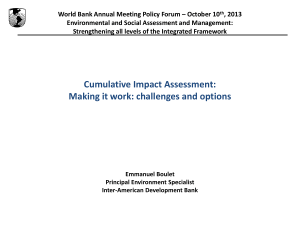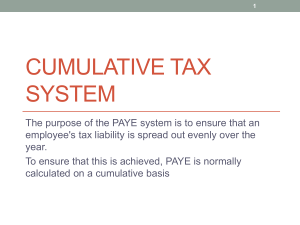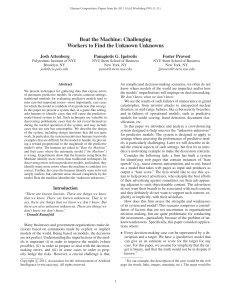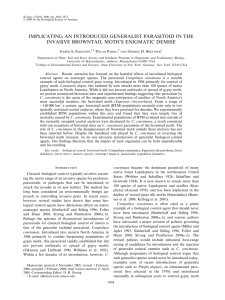세계 풍력시장 및 전망(BTM-WMU_2009_Final_PPP)
advertisement
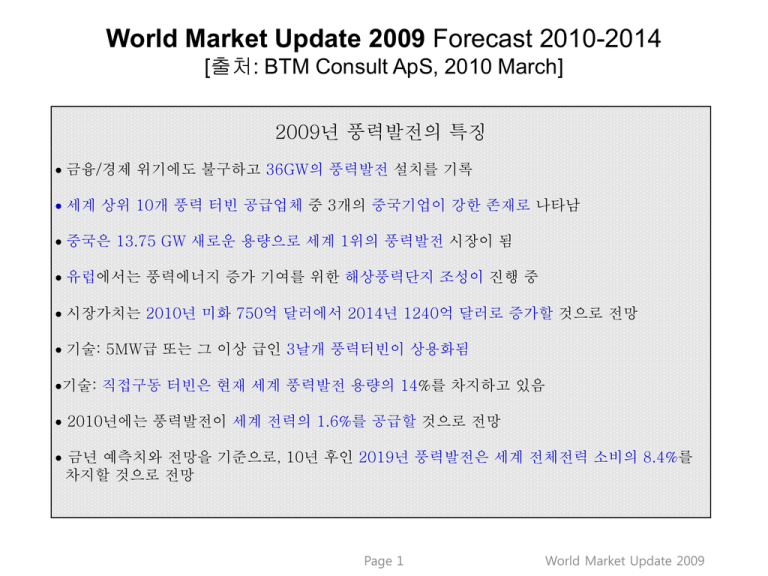
World Market Update 2009 Forecast 2010-2014 [출처: BTM Consult ApS, 2010 March] 2009년 풍력발전의 특징 금융/경제 위기에도 불구하고 36GW의 풍력발전 설치를 기록 세계 상위 10개 풍력 터빈 공급업체 중 3개의 중국기업이 강한 존재로 나타남 중국은 13.75 GW 새로운 용량으로 세계 1위의 풍력발전 시장이 됨 유럽에서는 풍력에너지 증가 기여를 위한 해상풍력단지 조성이 진행 중 시장가치는 2010년 미화 750억 달러에서 2014년 1240억 달러로 증가할 것으로 전망 기술: 5MW급 또는 그 이상 급인 3날개 풍력터빈이 상용화됨 기술: 직접구동 터빈은 현재 세계 풍력발전 용량의 14%를 차지하고 있음 2010년에는 풍력발전이 세계 전력의 1.6%를 공급할 것으로 전망 금년 예측치와 전망을 기준으로, 10년 후인 2019년 풍력발전은 세계 전체전력 소비의 8.4%를 차지할 것으로 전망 Page 1 World Market Update 2009 World Market Growth rates 2004-2009 Year: Installed MW 2004 8,154 2005 11,542 2006 15,016 2007 19,791 2008 28,190 2009 38,103 Average growth - 5 years Increase % 42% 30% 32% 42% 35% 36.1% Cumulative MW 47,912 59,399 74,306 94,005 122,158 160,084 Increase % 24% 25% 27% 30% 31% 27.3% Source: BTM Consult ApS - March 2010 The Top-10 list of suppliers 2009 VESTAS (DK) GE WIND (US) SINOVEL (PRC) ENERCON (GE) GOLDWIND (PRC) GAMESA (ES) DONGFANG (PRC) SUZLON (IND) SIEMENS (DK) REPOWER (GE) Others Total Accu. MW 2008 34,939 18,220 2,148 16,576 2,589 16,679 1,290 7,250 8,949 3,597 19,407 131,644 Source: BTM Consult ApS - March 2010 Supplied MW 2009 4,766 4,741 3,510 3,221 2,727 2,546 2,475 2,421 2,265 1,297 7,033 37,002 Page 2 Share 2009 % 12.5% 12.4% 9.2% 8.5% 7.2% 6.7% 6.5% 6.4% 5.9% 3.4% 18.5% 97% Accu. MW 2009 39,705 22,961 5,658 19,798 5,315 19,225 3,765 9,671 11,213 4,894 26,440 168,646 Share accu. % 24.8% 14.3% 3.5% 12.4% 3.3% 12.0% 2.4% 6.0% 7.0% 3.1% 16.5% 105% World Market Update 2009 The 15 largest wind farm operator Name of wind farm operator 1. Iberdrola Renovables (ES) 2. NextEra Energy Resources (US) 3. Acciona Energy (ES) 4. EDP Renovaveis (P) 5. China Longyuan (CN) 6. Datang Corporation (CN) 7. E.ON Climate and Renewables (GE) 8. EDF Energies Nouvelles (FR) 9. Invenergy (US) 10. Eurus Energy Holding (JP) 11. Infigen Energy (formerly BBW, AUS) 12. RWE Innogy (GE) 13. Huaneng New Energy (CN) 14. Enel (IT) 15. GDF Suez (FR) Total of the shown companies Cumulative MW Cumulative MW Cumulative MW capacity by end capacity by end capacity by end of 2007 of 2008 of 2009 7,362 8,960 10,350 5,077 6,374 7,544 3,824 4,566 6,230 3,639 5,052 6,227 1,620 2,924 4,842 1,008 2,154 3,023 855 1,890 2,873 1,218 2,031 2,650 887 1,723 2,018 1,385 1,722 1,903 1,859 1,530 1,739 489 639 1,568 129 402 1,550 857 1,237 1,510 690 1,054 1,492 30,899 42,258 55,519 Source: BTM Consult ApS - March 2010 Forecast 2010-2014 (incl. Offshore) Cumulative installed capacity (MW) by end of 2014 Installed capacity between 20102014 Installed capacity (MW) in 2009 Cumulative installed capacity (MW) by end of 2009 Forecast for wind power development 2010-2014 (Global) 2009 2009 2010 2011 2012 2013 2014 Sum Accu. Total Americas 40,351 11,433 10,000 12,600 18,400 18,900 22,100 82,000 122,351 Total Europe 76,553 10,738 13,305 16,000 18,025 20,500 21,250 89,080 165,633 Total South & East Asia 37,147 14,991 16,700 17,850 19,600 21,300 23,100 98,550 135,697 4,873 1,161 620 321 1,200 825 1,500 1,100 1,850 1,600 2,350 2,350 2,450 2,750 9,350 8,625 14,223 9,786 38,103 42,030 49,050 59,475 65,400 Total OECD-Pacific Total other areas Total MW new capacity every year: Accu. capacity (MW) 160,084 71,650 287,605 447,689 202,114 251,164 310,639 376,039 447,689 Source: BTM Consult ApS - March 2010 Page 3 World Market Update 2009 Electricity from Wind Power Country/Region USA Germany Spain P.R. China1) India Italy France United Kingdom Denmark Portugal Canada The Netherlands Japan Australia Greece Sweden Austria Rest of World Total Cumulative MW - end 2009 35,159 25,813 18,784 25,853 10,827 4,845 4,775 4,340 3,408 3,474 3,321 2,226 2,208 1,886 1,198 1,537 997 10,431 160,084 Est. average full load hours Est. average capacity factor 2,300 1,813 2,200 1,800 1,800 2,000 2,100 2,628 2,250 2,200 2,278 2,100 2,100 2,500 2,500 2,100 1,794 2,000 (avg. 2,073) 26.3% 20.7% 25.1% 20.5% 20.5% 22.8% 24.0% 30.0% 25.7% 25.1% 26.0% 24.0% 24.0% 28.5% 28.5% 24.0% 20.5% 22.8% (avg. 23.7%) Est. electricity production in 2010 TWh 80.87 46.80 41.32 46.54 19.49 9.69 10.03 11.40 7.67 7.64 7.57 4.68 4.64 4.72 2.99 3.23 1.79 20.86 331.91 Source: BTM Consult ApS - March 2010 Energy unit: 1 Tera Watt Hour (TWh) = 1 Billion kWh Page 4 World Market Update 2009 National commitments on GHG reduction targets for Annex I countries National commitments on GHG reduction targets from Appendix I (Part I) Countries Country/R egion Australia Reduction in % by year 2020 - 5% up to -15 % to -25 % Base year 2000 Belarus - 5 % to - 10 % 1990 Canada -17 % 2005 Croatia -5% 1990 EU Member States (27 countries) Iceland - 20 % or -30 % - 30 % 1990 1990 Kazakhstan - 15 % 1992 Comments The - 25 % is conditional to a strong global deal on a "450 ppm - limit" or lower. The - 5 % is unconditionally. Conditioned by access to the Kyoto Protocols flexible mechanisms. To be aligned with the US commitment Temporary - to be increased when the country becomes member of EU The 20 % target is already decided before the COP-15 event. If international progress before 2012 (Kyoto expires) a 30 % reduction may be decided Joining the European condition of progress before 2012 Liechtenstein - 20 % 1990 Monaco - 30 % 1990 New Zealand -10 to 20 % Norway - 30 to 40% 1990 Russian Federation -15 to 25 % 1990 Switzerland -20 % / 30 % 1990 - 17 % 2005 United States of America Conditioned to "an agreement where other developed countries participate according to their respective capabilities" Conditioned to ".. if there is a comprehensive global agreement made" … " there is a full recourse to a broad and efficient international carbon market" The 40 % reduction is subject to an international comprehensive agreement, which includes the 2 degrees target to be met. A special condition : "there is an effective set of rules for land use, land-use change an forestry" The 30 % reduction is subject to a comprehensive agreement for the period beyond 2012 (In line with the EU Member States' commitment.) In conformity with anticipated US energy and climate legislation (still pending by March 2010). The mentioned legislation calls for 30 % reduction by 2025 and 42 % by 2030 and finally 83 % by 2050 Source: UNFCCC. Int - web-site list as of 9 March 2010 Note: Three nations - the US, Canada and Australia - use another base year for their respective reduction targets, which makes them not directly comparable percentage wise. Page 5 World Market Update 2009


